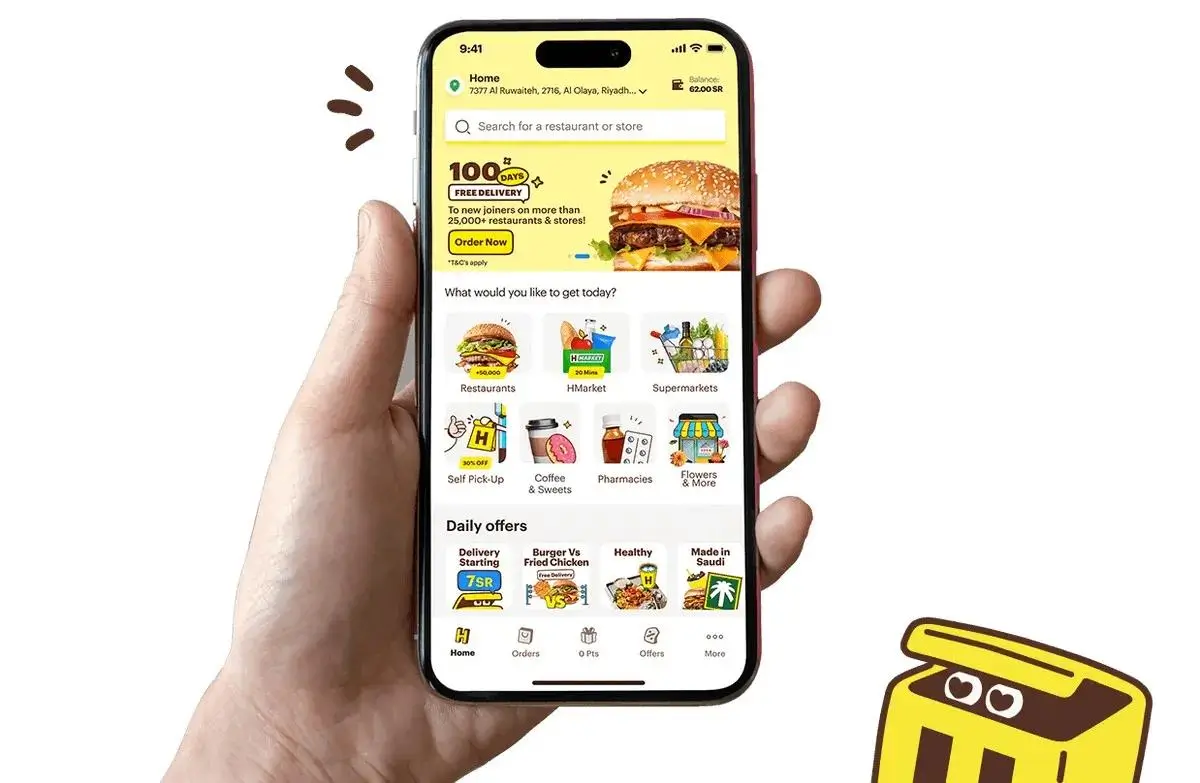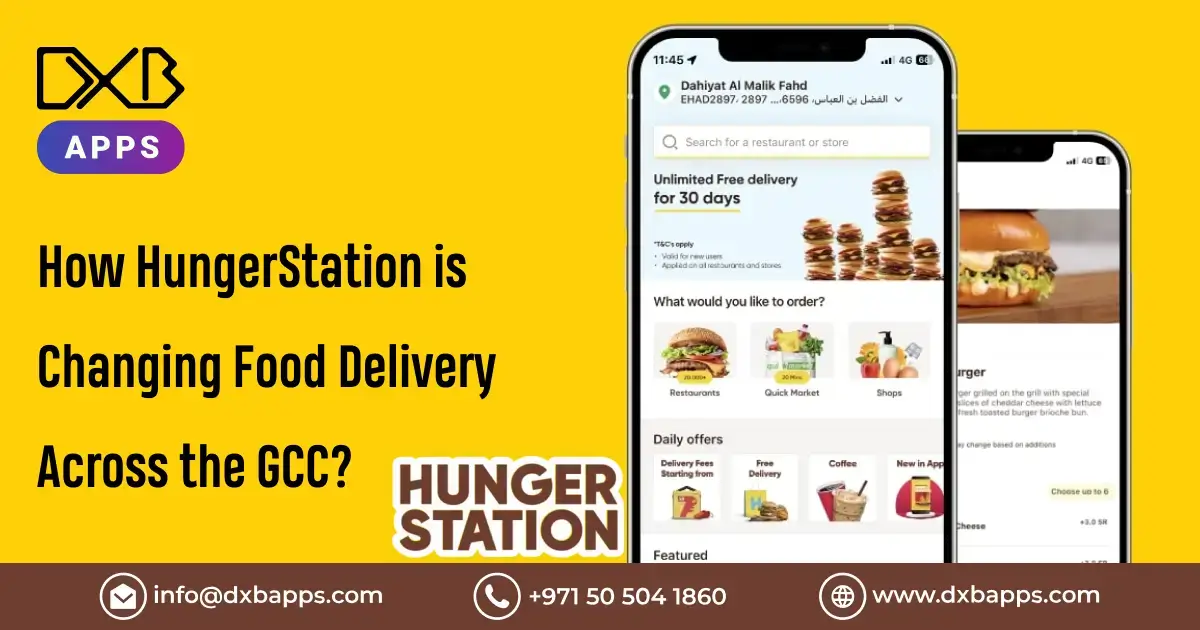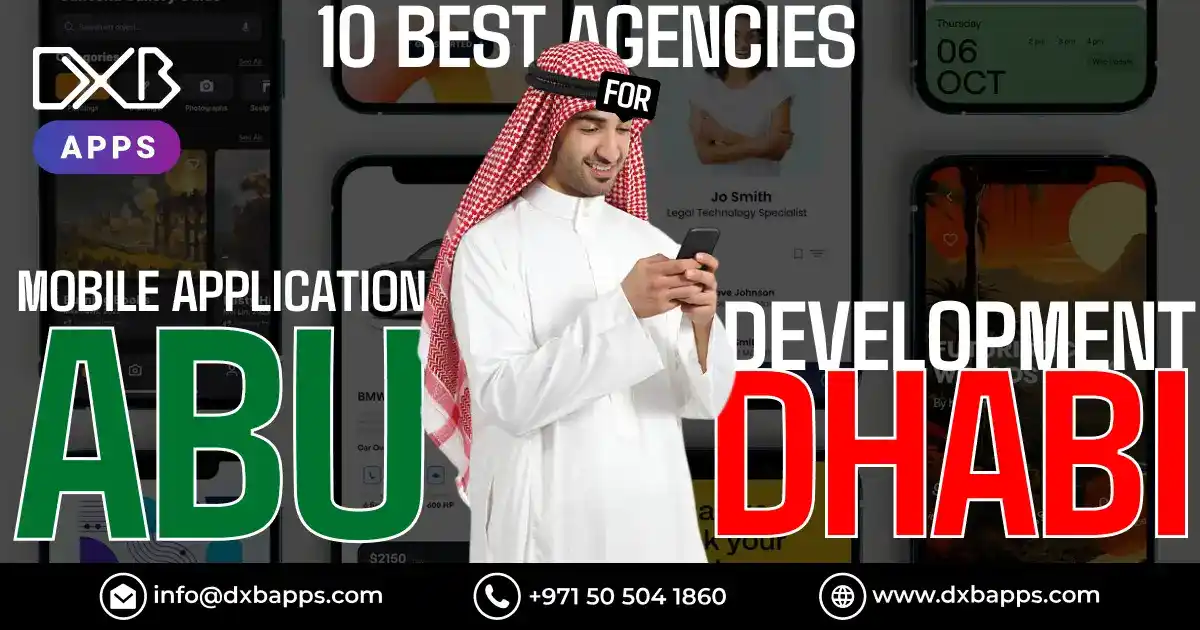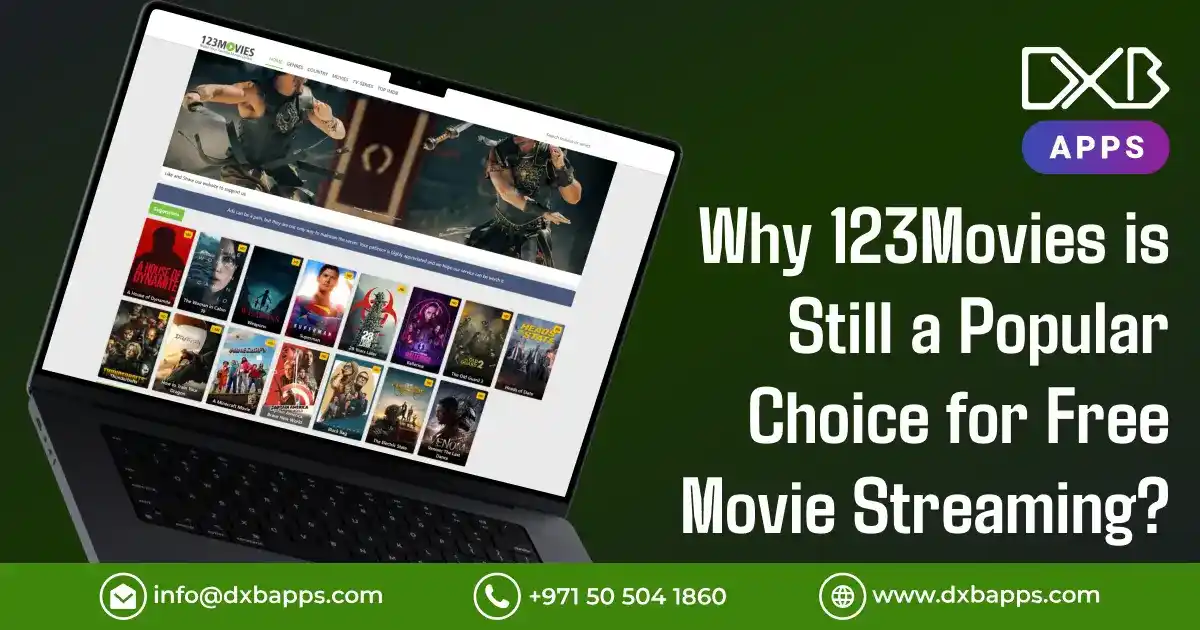The GCC area's food delivery scene has shifted big time during the last ten years. Leading this shift is HungerStation, a trailblazing app that reshaped how people in Saudi Arabia and neighboring spots get meals, groceries, or daily needs. With the Middle East's online economy growing fast, meal-ordering apps now play a key role in everyday life, bringing unmatched ease along with wide options.
HungerStation isn't only about bringing meals to your door; it's a go-to daily helper linking people to countless eateries and shops all over the country. Its rise mirrors how tech is reshaping life in the Gulf, fueled by everyone using smartphones more, pushing services to adapt faster.
The rising number of foreigners living in Gulf countries hit over 11.06 million in the UAE by 2024
This big growth, fueled by better web access, more people living abroad, and also shifting buyer habits, opened rich opportunities for apps such as HungerStation to grow while keeping new ideas flowing.

What is the Hungerstation App?
HungerStation started in Saudi Arabia back on March 5, 2012, right in Dammam, the first of its kind there. Over time, this app grew beyond just meals, branching out into a full-on hub for everyday essentials. Instead of sticking to one thing, it now links people with more than 55,000 eateries and shops spread across over 102 cities. Besides takeout, you can grab groceries, meds, blooms, or random goods, all in one place.
The HungerStation app works smoothly on iPhones and also Android devices, giving folks a no-fuss layout that makes ordering food way easier. Instead of guessing, people scroll through tons of eatery listings, check costs side by side, skim customer feedback, see sharp photos of meals, then lock in orders fast, just a couple of touches. Behind the scenes, solid tech keeps everything running without hiccups, lets you watch your meal's progress live, while offering flexible ways to pay, hand over cash when it arrives, or go digital instead.
What sets the HungerStation app apart isn't just tech; it's how well it gets local habits and what people actually want. Instead of generic options, you can switch between Arabic and English on the fly. Payments run straight in SAR, no conversions needed, making things smoother for daily use. When Ramadan rolls around, users can plan suhoor drop-offs ahead, timing matters, so this feature sticks. Because everything feels familiar, folks keep coming back, especially across HungerStation KSA. That's why, in crowded cities, HungerStation doesn't just compete, it leads.
Why Food Delivery App like Hungerstation, Getting Popular?
The rise in use of food delivery apps such as HungerStation comes from several overlapping reasons, shifting how people order meals and what they expect throughout the Gulf countries.
Digital Infrastructure Revolution
The easy reach of fast internet, combined with more folks using smartphones, built an ideal setup for digital tools to grow. Thanks to online access, people in the GCC now use food delivery apps whenever they want, from wherever they are. Because everything's connected, meal habits have shifted. Getting tasty dishes feels effortless, just a few swipes away.
The market of mobile app development has been growing fast, thanks to better tech setups lately. People today want smooth online interactions no matter what they're doing, so grabbing meals through apps just makes sense as part of that screen-life routine.
Changing Lifestyle Dynamics
Life in today's Gulf cities moves quickly, so folks barely find minutes to cook. With packed schedules, foreign workers struggle to whip up breakfast before heading out. Many put in long shifts while staying far from home, making things tougher. Because of this, they mostly depend on Saudi food delivery apps to get fed every day.
Companies now bring meals like morning food, midday dishes, or afternoon bites straight to workers at their desks. That change lines up with how job habits and daily routines are shifting throughout the area.
Post-Pandemic Behavioral Shift
The epidemic accelerated individuals to order food online, as no one wanted to enter crowded restaurants or places. That remained permanent, and many continue to order doorstep meals even though the rules are now less strict. The process of HungerStation registration is painless because of the painless sign-in feature that makes users remain on the site rather than seeking alternative options.
Technology-Driven Convenience
Today's food delivery apps use smart tools that totally change how people order meals. Thanks to artificial brains, suggestions fit what you like, so every pick feels spot-on. Smarter systems fine-tune where drivers go, cutting wait times while forecasts let eateries track stock before running out. All these upgrades work together behind the scenes, making services like HungerStation easy enough that folks come back without thinking twice.
Enhanced Safety and Hygiene Standards
More people paying attention to how safe their food is has pushed apps to check restaurants more carefully, offer no-contact drop-offs, and show clear cleanliness scores. Because of this shift toward security, folks feel better about buying meals online, especially those who really care about fresh, clean eating.
Key Features of a Food Delivery App Like Hungerstation
Today, food delivery app development by the best mobile app development company in Saudi Arabia needs smart tools working for users, eateries, besides couriers. HungerStation shows how it's done, packing solid functions that cover every side.
Customer-Facing Features
The HungerStation app's layout is simple to use; it helps people check out eateries, see dishes through clear photos, and then order without hassle.
- Search tools: let people sort eateries by food kind, how fast they deliver, reviews, cost, or deals running right now, so folks spot the perfect meal without wasting time. Each detail fine-tunes results, making choices easier when hunger hits.
- Live order updates: With GPS, folks can keep an eye on their Hungerstation courier as they grab the meal and bring it straight to the door.
- Multiple ways to pay: you can use credit or debit cards, go with digital wallets, choose cash when it's delivered, also swap HungerStation vouchers right there.
- Ratings plus feedback: full overview setups let buyers swap stories or guide peers toward smarter picks.
- Scheduled Ordering: People pick when they want stuff delivered, which lets them get ready for meals ahead of time.
- Loyalty Programs: With HPlus, members get endless no-cost shipping along with special deals and faster help when needed. On HungerStation, sharing a unique HungerStation referral code gets you rewards. People spread the word just by bringing mates on board.
Restaurant Partner Features
- A full-view dashboard lets restaurant teams check order stats, earnings, and what customers like, while spotting busy hours through clear data displays.
- Restaurants tweak their menus fast, swap dishes, toss in new ones, adjust costs, or spotlight deals now and then.
- Order Management System: Get live alerts on orders while guessing how long prep will take, helping eateries stay on top of things.
- Promo tools let partners run custom deals, using HungerStation code, to pull in more buyers.
Delivery Partner Features
- The HungerStation rider app picks smart paths using clever math tricks, so trips take less time while saving gas.
- Riders see exactly what they earn, each payout split clearly, with updates that follow their day-to-day rides.
- Flexible timing, workers pick when they work while juggling several drop-offs without hassle.

Step-by-Step Guide to Develop A Food Delivery App Like Hungerstation
Fashioning a full-featured meal delivery app means solid prep work along with sharp tech skills plus getting how the marketplace really works.
Step 1: Market Research and Planning
Start by checking out the market, get a clear picture of who you're aiming at, what rivals are doing, plus what makes your offer stand out. Look into top apps such as Hungerstation KSA to spot tools people actually use and enjoy.
Step 2: Define Core Features and MVP
Start by building a basic version that includes signing up users, showing local eateries, letting people place orders, handling payments smoothly, while also offering live updates on delivery status team up with expert mobile app developers who can rank key functions according to what customers actually want.
The GCC's online food delivery scene hit $3.93 billion in 2023, on track to jump to around $11.18 billion come 2030
Step 3: Choose the Right Technology Stack
Select suitable tools like React Native or Flutter up front, while using Node.js or Python behind the scenes; go with PostgreSQL to handle data storage, rely on AWS to run services in the cloud, then pull in Google Maps API when location tracking's needed.
Step 4: Design User-Centric Interfaces
Build easy-to-use layouts that fit every kind of visitor. The HungerStation registration shows how smooth entry steps boost engagement.
Step 5: Develop Backend Infrastructure
Set up solid server setups handling big crowds, moving purchases without hiccups while keeping stock data sharp, through small linked services doing one job well.
Step 6: Integrate Essential Third-Party Services
Hook up payment systems with alerts and maps alongside tracking features, make sure it fits local rules though.
Step 7: Implement Advanced Features
Add smart suggestions driven by AI, use voice commands to place orders, link up a custom grocery app development, or tie in rewards plans using HungerStation coupon codes.
Step 8: Rigorous Testing and Quality Assurance
Run tests for function, speed, safety, ease of use, or cross-platform behavior on every device and system.
Step 9: Launch and Marketing Strategy
Roll out quietly in a few spots first, then collect user thoughts before widening reach; toss in HungerStation voucher deals to spark early interest.
Step 10: Continuous Improvement and Scaling
Find a firm that has a strong Mobile App Development to monitor performance, and get the user feedback, and refine, step by step.
What is the Cost to Build a Food Delivery App Like Hungerstation?
The cost to build a food delivery app development changes a lot depending on how complex it is, what functions it includes, or where the developers are based.
Cost Breakdown by Development Phase
- Discovery + planning ($5k–$15k): Studying the market, checking rivals, with shaping how tech fits together.
- Design Stage ($8k–$25k): Expert interface planning including layout sketches, screen visuals, or interactive models.
- MVP Build ($30K–$80K): Core setup, includes user app, eatery dashboard, along with must-have tools.
- Full-Scale Setup ($80,000 – $250,000+): Complete system packed with high-end tools along with various connected services.
Geographic Location Impact
Regional variations in development costs, in North America, it is between $100 and 250 per hour, Western Europe is between $80 and 200 per hour, Eastern Europe is between 40 and 100 per hour, the Middle East is between 50-150 per hour, and Asia is between 25 to 80 per hour.
Ongoing Operational Costs
- Server hosting runs $500 to $5,000 a month
- Third-party tools add another grand up to ten large every 30 days
- Upkeep takes around 15–20% each year, while promo expenses pile on top
The HungerStation login plus account setup might look easy, yet they depend on complex server setups, because safety, growth needs, and steady performance can't be skipped.
Top Alternatives Similar to Food Delivery App Like Hungerstation
Figuring out who you're up against lets companies spot openings while setting themselves apart.
Major Competitors in the GCC Market
- Talabat: Been around a while, one of the first big names in the area, active in eight nations. Got picked up by Delivery Hero; now it hooks users with tons of eateries, branches out into non-food services too, on top of already being widely known throughout the Gulf countries.
- Deliveroo: A British company that operates widely across the UAE and Kuwait, hooked up with high-end eateries, runs its own courier network, while pushing a membership plan called Deliveroo Plus.
- Careem NOW: Uses the company's current ride service setup along with its known customer network, links up with Careem Pay, keeps delivery costs low compared to others, also branching out into bringing groceries.
- Noon Food: Supported by Emaar Properties along with Saudi Arabia's PIF, it gives solid prices, grows fast through the UAE and Saudi Arabia, while linking closely into Noon's wider network.
Niche and Specialized Platforms
- Jahez: A homegrown pick from Saudi Arabia, tuned into local needs, offers sharp rates while standing out through street-smart moves.
- The Chefz: A top-tier spot that highlights pro-level food prep plus memorable eating moments.
- Rafeeq: Goes after folks who care about price, zeroing in on low costs.
Every player uses unique tactics to win in the Saudi food delivery apps scene, so newcomers can spot gaps others miss.
The market's expanding quickly, about 14.48% each year from 2024 to 2030
How to Monetize Food Delivery Applications Like Hungerstation?
A working food delivery app needs a steady income plan, mixing profit with real benefits for users.
Commission-Based Revenue
Most places pay a cut per sale, usually between 15% and 30%. That way, when eateries do well, the service benefits too.
Delivery Fees
Getting paid for deliveries brings in cash at the same time as keeping shipping expenses under control. Smart moves involve:
- Distance-based pricing
- Rates jump when demand spikes
- Minimum order values
- Free delivery thresholds
Subscription Models
Premium plans such as HPlus give fast shipping at no extra cost, special deals from time to time, also quicker customer help. Besides the main perks, the HungerStation code bundled into these memberships boosts how often people stick around.
Advertising and Promotional Listings
Restaurants spend cash to rank higher when you search, show up in promoted spots, grab attention with ads on banners, or get highlighted with special tags.
Service Fee Markup
Small charges based on how much you spend help cover costs for running things, upgrading tools, or assisting users.
Strategic Partnerships
Teaming up with firms that handle payments, cards, or phone services brings in extra cash by splitting profits and launching joint products. The HungerStation referral code setup and discount coupons usually link up with brands wanting to grab new users.
Future of the Hungerstation App in the Food Industry
The path HungerStation's on, along with the whole world of making food apps, is heading into new territory, changing how people connect with meal deliveries in ways nobody saw coming.
Artificial Intelligence Integration
AI's stepping up in how platforms run, using smart guesses from past buys, what the weather's like, or big local happenings to predict what people'll order next. Instead of one-size-fits-all picks, users get suggestions dialed into their cravings and food rules, thanks to sharper targeting tech.
The HungerStation rider app uses smart routing driven by AI, adjusting paths on the fly using live traffic updates, current weather shifts, or urgent drop-offs, to cut down delivery duration while boosting how much each rider can handle throughout their shift.
Autonomous Delivery Technologies
A self-driving delivery bot or a flying drone might totally shift how goods move across the sector. Even if rules slow things down in the Gulf countries, saving money on deliveries could push companies to jump in fast, once they sort out tech hiccups and legal red tape.
Virtual and Cloud Kitchens
Cooking hubs made just for deliveries are set to grow fast. Since they're built lean, expenses drop while testing new dishes gets easier. Running several food names out of one spot becomes doable thanks to streamlined setups. Growth into fresh areas also opens up more smoothly this way.
Sustainability Initiatives
Folks in the GCC are paying more attention to eco-friendly choices, so businesses are shifting how they operate. Coming up, we could see delivery vans running on electricity instead of gas, stricter rules on plastic wraps and boxes, shipping methods that balance out pollution, efforts to toss less grub, also eateries getting scored on their green habits.
Expanded Service Categories
The shift away from just delivering meals is going to keep moving forward. Coming updates could bring ready-to-cook boxes, niche items, farm-fresh veggies, everyday home supplies, maybe even hygiene stuff too.
Enhanced Customer Experience Technologies
Augmented reality could let people see meals on screen before they buy. Using voice commands via smart devices makes placing orders easier without lifting a finger. Logging into HungerStation might shift toward fingerprint scans or quick access through social media accounts.
How DXB APPS Builds the Best Food Delivery Apps in Saudi Arabia and the UAE?
In today's crowded mobile app scene across Saudi Arabia and the UAE, DXB APPS rises above others by helping companies create top-tier apps for food and groceries. Instead of just focusing on code, we blend solid tech skills with real app development insights using tested strategies that push results past what clients imagine.
DXB APPS has deep know-how in building advanced delivery systems able to go head-to-head with big names such as HungerStation. With a team of expert mobile app developers, we are tuned into how Middle East customers actually behave, think about local customs, how people pay, what rules apply, along with buying habits that don't mirror those in Western regions.
We kick things off by digging deep into what you need, teaming up from day one to get your goals, audience, and big-picture plans clear. Instead of just building fast, we design smart apps using cloud-based setups that grow; meanwhile, top-tier protection like full-chain encryption and scam monitoring keeps threats at bay. After launch, regular check-ins and updates keep your system sharp, ready to outpace rivals.
Businesses looking to create a new food delivery app development or move into grocery app development can count on DXB APPS. As a leading mobile app development company, we ensure your app stands out in the competitive GCC market.
Conclusion
HungerStation changed how people get food in the Gulf, becoming a daily go-to for countless users. Its success shows what happens when smart tech meets deep regional insight, delivering real benefits where it counts.
The rise of this company gives useful insights for people starting ventures or running companies. Although chances are strong in the sector, with steady expansion expected until 2030, winning means standing out via distinct functions, better usability, while also grasping how local meal platforms really work. No matter if you manage a diner or launch startups, what HungerStation achieved shows how smart tech use can reshape everyday challenges.
FAQs
Q1: What steps does HungerStation take to keep food safe and fresh while it's being delivered?
HungerStation checks restaurants carefully, uses sealed packs that show if opened, shares cleanliness scores, and deliveries happen without direct handoffs, all backed by frequent inspections.
Q2: Why should I build a food delivery app similar to HungerStation for my company?
Better access to more buyers opens up new income paths, while useful data on users boosts decision-making, and smooth operations follow when tools work together behind the scenes.
Q3: What's the usual time needed to build a food delivery app like HungerStation?
A simple MVP usually needs around three to four months, whereas a complete platform might take half a year up to a whole year, depending on how complex it is or how big the team working on it happens to be.










